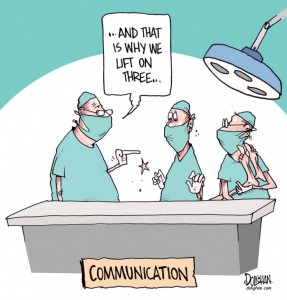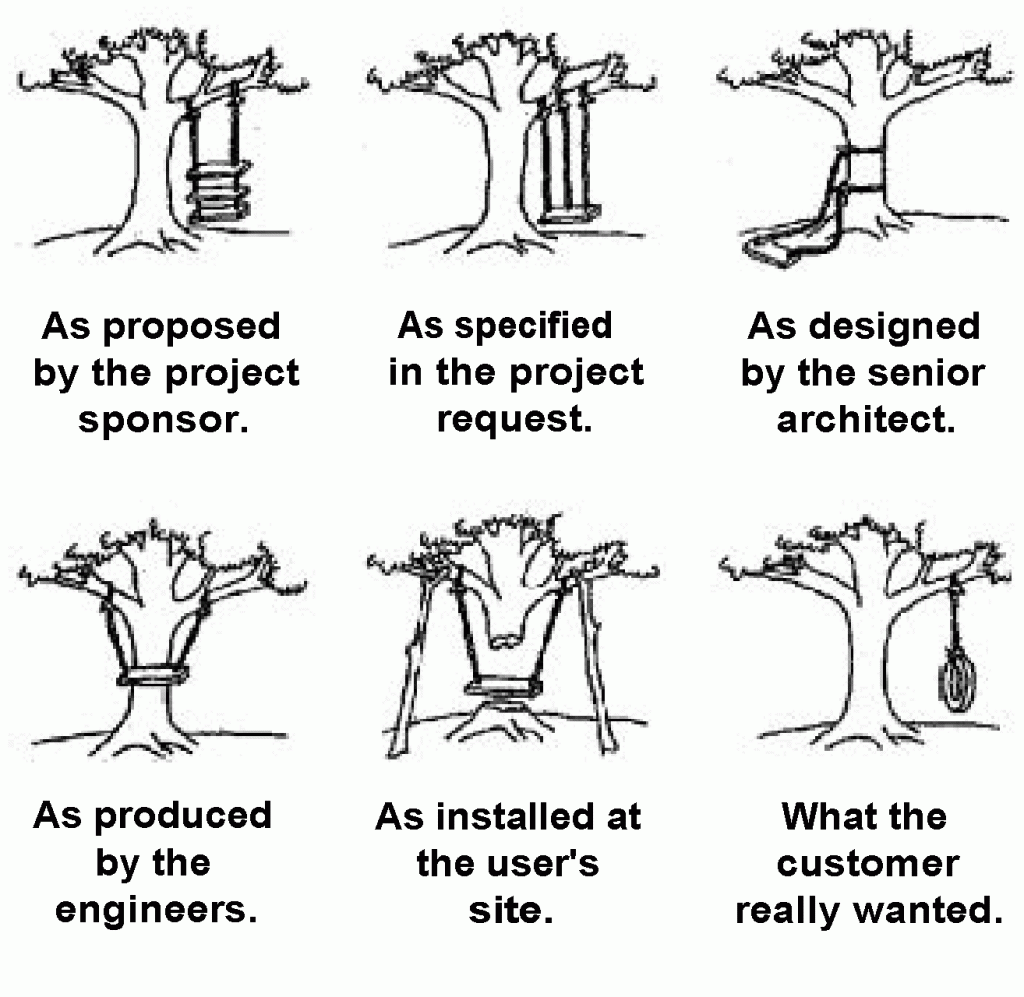Communication – The Key to Success
 Bridging the gap between technical and non-technical people can be one of the most difficult challenges facing all of us. This communication gap can be the cause of projects failing, building software that does not meet the needs of the customer, or a lack of understanding about what technology can or cannot accomplish.
Bridging the gap between technical and non-technical people can be one of the most difficult challenges facing all of us. This communication gap can be the cause of projects failing, building software that does not meet the needs of the customer, or a lack of understanding about what technology can or cannot accomplish.
Communication is a two way street. You must hear the other person, and they must understand you. An intimate connection has to happen.
I am an extremely passionate person. I care deeply about all facets of my work. I learn from successes and failures. One of my greatest failures turned into a revelation that changed my view of business, of business relationships, leadership and success.
For most of my life I have been fascinated by electronics, computers, and the potential to make them do really cool things. I was passionate about bending software and electronics to do what I wanted; I knew I would always find a way. Early exposure to science fiction fed my enthusiasm and desire. I always wanted to be “one of the boys in the back room”, inventing cool stuff, writing new software and never interacting with a customer. The things we were making would be so fantastic, people would just want them. I wanted to be a “professional tinkerer”. My first ten years at RIM, this dream came true.
Then we became wildly successful. People depended upon the BlackBerry as a day-to-day tool that helped them live their lives. All of a sudden, customers were demanding that our software be more reliable, scalable, flexible, and above all stable. This meant that I was spending more time with customer issues, less time inventing. Not good for me. Yet, I began to wonder why there was such a gap between what we were making, and with what the customers did not like. An opportunity arose to bridge the gap between customers and development, so I took it.
I met with leaders of many major companies in Canada and USA. I was simply blown away by the experience. Their perspective on how things should work was so different than mine. The BlackBerry Enterprise Server Administration console was a simple interface, which works well for me; I like my interfaces clean and simple. Accustomed to Microsoft and IBM administration consoles, ours looked like a backroom project, an afterthought. This made me believe, initially, that all we had to do was make ours look “prettier” and they would be happy. Simple answer! Then I dug a little deeper, listened more to their actual pain points, saw the flaming rings they had to jump through to provision a new employee, and learned that the real problem was that we did not integrate into their new employee provisioning workflow.
We implemented a programmatic interface to our user control functions, and people were happy. Had I not taken the time to listen beyond their words, we would not have done this. The key was listening and understanding beyond what they were saying, hearing their emotional response.
As time went on, I learned many different styles to communicate with our customers, to empathise with them, to really connect on various levels. Equally important was how to speak with them so that they would understand what I said. Again, this required connecting on many levels. I worked with my colleagues to enhance their skills, to not be defensive about our software, but to acknowledge the customer’s perception even if the software “worked as designed”. These communication skills benefitted many of them in their careers, perhaps one of the best skills I helped them acquire. Trust, honesty, integrity, humility and genuine passion were all the characteristics that enhanced the relationships.
Ironically, this special power I had with our customers did not materialize within our company. Most of our large enterprise customers told us that line of business applications was the game changer and could drive BlackBerry sales throughout their organization. We had a solution in place that would make development of apps and data synchronization simple. In 2005, years before the iPhone had apps. We actually had multiple solutions in place.
 Yet, we fumbled the ball. The technical team (me) did not explain the technology that we had developed, and how it met the needs of these customers. I assumed that our product team understood what had been built, its power, and potential uses. More importantly how easily it solved what our customers were looking to do. I knew it! I heard our customers, I understood our technology. It was at our fingertips, and we could not get our product team to understand it! Rather we did not connect with our internal teams the way we did with our customers.
Yet, we fumbled the ball. The technical team (me) did not explain the technology that we had developed, and how it met the needs of these customers. I assumed that our product team understood what had been built, its power, and potential uses. More importantly how easily it solved what our customers were looking to do. I knew it! I heard our customers, I understood our technology. It was at our fingertips, and we could not get our product team to understand it! Rather we did not connect with our internal teams the way we did with our customers.
The result is part of the reason that BlackBerry went from the creators and market leaders of a new class of technology to number three.
The product team was every bit as important a customer to software developers as the people who bought our BlackBerrys and Servers. Customer service – communication – is vital at all levels. To all groups of people internal and external to the company. Take the time to make connections, enhance them, and grow them. Understand the motivation of internal teams as much as you do external groups and you will build solid relationships based on trust.
I take this lesson seriously, and work hard to embed it into the DNA at Mabel’s Labels. There was a serious disconnect between IT and the other departments, there was a sense of arrogance and “I know better”, from IT that caused a great deal of friction. Mabel’s is known for fantastic customer service. It is one of the hallmarks of the company. Yet this level of service did not exist between IT and the internal groups. Lesson learned from RIM, this became a mantra of mine, to provide excellent service to our internal customers, to interact with honesty, integrity, humility and passion. Every member of the team possesses these skills.
We continue to work on these relationships everyday. Front of mind is the need to understand, to connect, to listen and to look beyond the words to the motivations behind the requests. We seek to understand, and to be understood.
Build relationships and your business will build itself. Truly understand what motivates your customer, internal and external. Communicating on many levels is vital to building that relationship. Learn the nuances and differences in communication styles and you will be successful.
